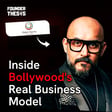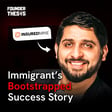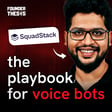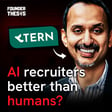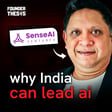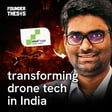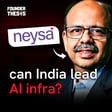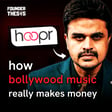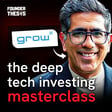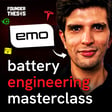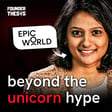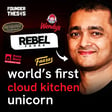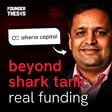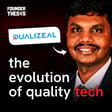
The Two-in-One Startup: Why Anil Goteti Built Scapia as Card + OTA
Ever wondered how credit card companies actually make money and why your rewards never seem to add up?
Anil Goteti, Founder of Scapia, reveals the hidden business of cards: from interchange fees and breakage profits to why banks spend ₹3,500 acquiring each customer and still wait three years to break even.
The business of cards in India is a multi-billion dollar industry built on economics most consumers never see. Anil Goteti spent eight years at Flipkart mastering consumer behavior before diving into this opaque world with Scapia, a travel-focused credit card that's raised $72 million to challenge how the card business operates.
In this masterclass conversation with host Akshay Datt, Anil deconstructs the entire value chain: how merchant discount rates get split between issuing banks, acquiring banks, and payment networks like Visa and Mastercard, why co-branded card partnerships exist, and how rewards programs are designed so 50% of points expire unused, a profit center called breakage. He exposes why traditional banks charge forex markups of 3-5% on international spending, how customer acquisition costs in the card business have ballooned to ₹3,000-3,500 per customer, and why it takes six to nine years of card usage before banks see real profit.
Anil also shares Scapia's contrarian approach: zero fees, zero forex markup, instant transaction visibility, and making reward redemption so easy it threatens the breakage model competitors rely on. Beyond card economics, this episode explores how Scapia survived when RBI banned their banking partner from issuing new cards, why the business of cards in India is still massively underpenetrated compared to Western markets, and how the convergence of fintech and travel creates dual revenue streams that make their aggressive customer economics sustainable at scale.
What You'll Learn:
👉The complete business model of credit cards: how interchange fees, MDR splits, rewards programs, and interest income create the revenue stack
👉Why banks spend ₹3,000-3,500 acquiring each card customer and still need three years to reach breakeven on that investment
👉How Scapia built a $72M card business with zero fees by monetizing through travel commerce and challenging the breakage profit model
👉The hidden economics of co-branded cards: how fintech companies and banks share risk, revenue, and customer acquisition costs
👉Why India's card business is poised for explosive growth with only 6-7 cards per 100 people versus 300+ in developed markets
👉Real-time product innovation that's reshaping the card business: instant forex conversion, transparent rewards ledgers, and seamless bill payments
#CreditCardBusiness #CreditCardEconomics #InterchangeFees #MDRExplained #CardBusinessModel #CreditCardIndustry #CobrandedCards #RewardsPrograms #BreakageProfits #ForexMarkup #CustomerAcquisitionCost #CardUnitEconomics #PaymentNetworks #IndiaFintech #CreditCardStartups #FintechBusinessModel #TravelFintech #CardIssuingBusiness #BankingPartnership #CreditCardRevenue #StartupIndia #FintechIndia #CardPayments #digitalpayments Disclaimer: The views expressed are those of the speaker, not necessarily the channel




